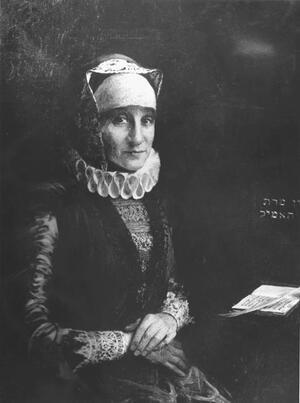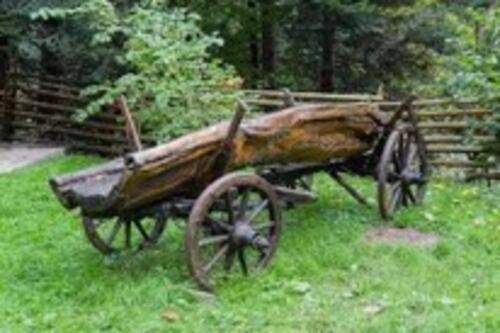The Life and Legacy of Glückel of Hameln
Julie Rezmovic-Tonti teaches middle school Jewish history and serves as Outreach Coordinator at Gesher Jewish Day School in Fairfax, Virginia. She has a BA in Women's Studies from the University of Maryland and an MA in Jewish Studies from Siegal College. She also studied at Yeshivat Simchat Shlomo and the Shalom Hartman Institute in Jerusalem. She lives in Fairfax, Virginia, with her husband, three children, typewriter, pottery wheel, and garden.
Jessica Kirzane is the Lecturer in Yiddish at the University of Chicago and the Editor-in-Chief of In geveb: A Journal of Jewish Studies. She is also a literary translator from Yiddish and has taught Jewish Studies at multiple grade levels. As a contributing author and editor for the Teach Great Jewish Books website of the Yiddish Book Center, she has created several resources to bring literary and historical documents into the high school classroom.
The Life and Legacy of Glückel of Hameln
By engaging with the diaries of Glückel of Hameln, a 17th century Jewish woman from Hamberg, students will make connections between past and present, and, through these first-hand accounts, learn about the Jewish culture and history of this specific time and place.
This lesson is adapted from a resource kit published in 2016 by the Yiddish Book Center, co-authored by Julie Rezmovic-Tonti and Jessica Kirzane. The kit provides background reading and additional materials and exercises to provide historical context. JWA gratefully acknowledges Great Jewish Books for allowing us to reprint this material.
Overview
Enduring Understandings
- We can connect to people in the past through the writings they leave behind.
- We can relate to Glückel, a Jewish woman from over 300 years ago through her perspective, relationships, and issues that she deals with in her day-to-day life.
- Through the study of Glückel’s life one can also learn a great deal about the culture, history, and environment of the Jews of Ashkenaz.
Essential Questions
- Are women in the past any different from women today?
- Are Jews living several hundreds of years ago different from Jews living today?
- How does learning about a different time/place influence your thoughts about your own place within society?
- How can the study of history and Jewish history specifically increase the collective wisdom of the Jewish people and the world?
Materials Required
Paper
Pencil/Pen
Access to computer for “Further Discussion” sections
Notes to Teacher
- To understand Glückel in her historical context one must learn a little about the world from which she came. See the “Teacher Resources” section below for some materials that can help you deepen your own knowledge about this historical context.
- Each part in the “Document Studies” section below features an excerpt from Glückel’s diary that speaks to a particular theme, along with questions for students to ponder in their diaries, as well as ideas for further discussion and related projects.
- Depending on how much time you have and what your goals are, you can lead your students through all of the Document Studies, or pick and choose which ones you want to complete. Some of the Document Studies have a “For Further Discussion” section; depending on how much time you have, treat these as ideas for extension activities.





